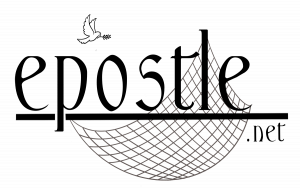Memorial Day 2025
Memorial Day Thoughts by Fr. Vazken Movsesian
Last Sunday I stood in church next to a visiting clergyman. We didn’t have an opportunity to speak before the morning service, but when the celebrant priest went to the vestry to prepare for the Liturgy, we had a few moments to exchange pleasantries. I asked him from where he was visiting. He answered quickly, Ukraine. I looked over at him in the moment of the unexpected answer, and he quickly pinpointed for me a precise location: Odesa, he said. He serves the dwindling Armenian community there. I asked him if he was close to the fighting, to which he again snapped, Every day, bombs are dropped around us! We see them fall in the middle of the city.
The war was right next to me in this holy sanctuary. There’s no escape. The Divine Liturgy began but I could not get Ukraine out of my mind. There I was, in church, with priest who was in proximity of bombs and gun fire every day. There’s no escape from the new reality. War is all around us and it’s invading all of our spaces. We can choose to ignore it, or take an active role in advocating for peace.
And then, the Priest came down from the altar. And processed around the inner circumference of the church. As he walks by the congregants, he holds a cross in one hand and censes fragrant incense with the other.
There are a variety of reactions to his presence in the congregation. Some lower their head to ask for a blessing, while others kiss the cross in the priest’s hand out of reverence. Others smile and acknowledge his presence, while others are too busy reading the bulletin or perhaps scriptures. Still, others watch as he goes by, not interested in engaging in any manner. And then of course, for those who are not there at that moment, the opportunity to interact is lost because the priest processes through the sanctuary and ascends back to the altar area to continue the Liturgy.
This part of the Divine Liturgy, is as old as Christianity itself. It symbolizes Christ’s descent from the comfort of heaven to live, walk and be among us, after which he ascended back to heaven. During Jesus’ life, there were many reasons and many different interactions with him, just like the congregants on a Sunday morning interacting with the processing priest. There were people who sought him for miracles and healings, while others engaged with him for a blessing or merely to touch his garment. And, of course, for many, the opportunity to be made whole was there and they let him pass by. They were busy praying, reading, rationalizing or philosophizing and, he went by, never to be engaged.
In life, there are moments that are singularity and they demand our interplay at that moment, otherwise, they go by. Sometimes, events demand that we interact.
Today wars are taking place. Genocide is happening on the world stage. Ethnic cleansing is the plot. When my grandparents were exiled from their ancient homeland in Armenia and 1.5 million Armenians were killed in what came to be called the First Genocide of the 20th Century, and when they were left to die and starve from famine and contract malaria, they wondered how can this happen? How can good people, people who go to church, who believe in God allow such acts to take place.
The story continued in Nazi Germany, in Ethiopia, Cambodia, Bosnia, Rwanda, Darfur, Congo and now in Gaza. I’m not talking about politics. I’m talking about humanitarian aid, because I can’t look at pictures of starving children and not think of my grandparents. Why do you think they call these, “Acts against humanity”? Genocide is not war, it’s the manifestation of hatred. It is fueled by pure hatred and prejudice. It may be manipulated by politics, but the fuel is evil, just as hatred is.
And this is where we come in. The Savior at the Center of our Church, Jesus Christ, is the manifestation of Love. We’ve never tried love as a solution. It’s more powerful than hate, just as light is more powerful than darkness, and in the Resurrection, we learned life is more powerful than death.
Yes, this is a moment of singularity in your life. Just like that morning in church, the opportunity is right now – you can interact, you can sit back, you can pray, you can analyze, you can read scriptures – but those children are still dying of hunger and bombs of hatred continue to fall on the innocent.
I share this with you on this Memorial Day weekend, in remembrance of all those who laid down their life for the freedoms we enjoy, for the freedom that allows me to share this message with you. We remember their sacrifice and pray that we learn from the ugly scars left in our world by these inhumane actions.
For today, I’d like to share with you a prayer that is an answer to Shnorhali’s nineth hour of prayer, Lord Jesus Christ, you who opened the eyes of the blind man, open our eyes which are blinded by hatred. You who gave hearing to the deaf man, open our ears which can no longer hear the cry of babies. You who loosened the tongue of the mute, open our mouths so we may share our voice for justice. You who restored strength in the legs of the paralyzed man, give us the stamina to walk to bring aid. You who opened the hearts of those who hate, open our hearts to give to those in need. Amen.

 Primate of the Western Diocese. On this occasion His Eminence announced that Osheen Keshishian will have the distinction of being the first “Centennial Luminary” for his long-standing dedication and contributions to the Armenian Church and Armenian Nation. The Diocese will be celebrating its Centennial Anniversary in 2027 and on that occasion a special dedication and plaque will be installed in his honor.
Primate of the Western Diocese. On this occasion His Eminence announced that Osheen Keshishian will have the distinction of being the first “Centennial Luminary” for his long-standing dedication and contributions to the Armenian Church and Armenian Nation. The Diocese will be celebrating its Centennial Anniversary in 2027 and on that occasion a special dedication and plaque will be installed in his honor.







